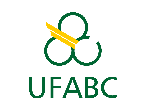Banca de DEFESA: THIAGO MAURICIO ANDRADE
Uma banca de DEFESA de MESTRADO foi cadastrada pelo programa.STUDENT : THIAGO MAURICIO ANDRADE
DATE: 02/09/2022
TIME: 10:00
LOCAL: Remota GoogleMeet
TITLE:
Effect of hydraulic retention time and intermittent aeration cycles on the establishment of the nitritation process for the treatment of wastewater with low nitrogen concentrations
PAGES: 100
BIG AREA: Engenharias
AREA: Engenharia Sanitária
SUBÁREA: Tratamento de Águas de Abastecimento e Residuárias
SPECIALTY: Técnicas Avançadas de Tratamento de Águas
SUMMARY:
Desamonification is a combination of partial nitritation and anammox (Anaerobic Ammonium Oxidation) processes, the first usually being the limiting step. Due to its environmental and economic advantages, especially in terms of energy efficiency and lower waste generation, when compared to heterotrophic nitrification and denitrification processes, this technology attracts the attention of the environmental sanitation sector to meet the Sustainable Development Goals (SDGs). ). For the establishment of nitritation, it is necessary that ammonia oxidizing bacteria (BOA) are favored, while nitrite oxidizing bacteria (BON) are suppressed. However, achieving such a feat is extremely difficult, especially in low-concentrated effluents such as sanitary sewers. In this context, the present work aimed to study the effects of the use of different operational strategies in the stabilization of the nitritation process during the treatment of wastewater with low concentrations of ammoniacal nitrogen. To this end, two reactors are being operated in parallel and under the same operating conditions: a reactor with biomass immobilized in polyurethane foam (R1); and reactor with biomass immobilized in biomedia model PZE 665 made of High Density Polyethylene (R2). Aeration is being developed intermittently and applied with the aid of air compressors and porous stone diffusers. The system's operation was divided into two stages: in stage 1, the feeding is being carried out with inorganic synthetic wastewater, with characteristics similar to sanitary sewage; and in step 2, the feeding will be carried out with raw sanitary sewage. After 14 days of departure, it was possible to evidence the beginning of microbial activity from the oscillation in the values of OD (dissolved oxygen) and reduction of the values of effluent ammonia. Over the days of operation, both reactors have shown performance gains in terms of N-NH4+ removal, with efficiencies ranging from 80 ± 19% to 93 ± 15%, and from 74 ± 14% to 81 ± 13%, respectively for reactors R1 and R2 in phases I and II. The average consumption of alkalinity by oxidized NH4+ is close to the existing theoretical values for nitrification/nitrification under all conditions studied. That said, it is suggested that the systems were able to establish nitrification, whether partial or complete, albeit perhaps in an unstable manner.
BANKING MEMBERS:
Presidente - Interno ao Programa - 2342998 - RODRIGO DE FREITAS BUENO
Membro Titular - Examinador(a) Interno ao Programa - 1814655 - LUCIA HELENA GOMES COELHO
Membro Titular - Examinador(a) Externo à Instituição - RENATO PEREIRA RIBEIRO
Membro Suplente - Examinador(a) Interno ao Programa - 3047358 - RICARDO HIDEO TANIWAKI
Membro Suplente - Examinador(a) Externo à Instituição - FABIO CAMPOS - USP




